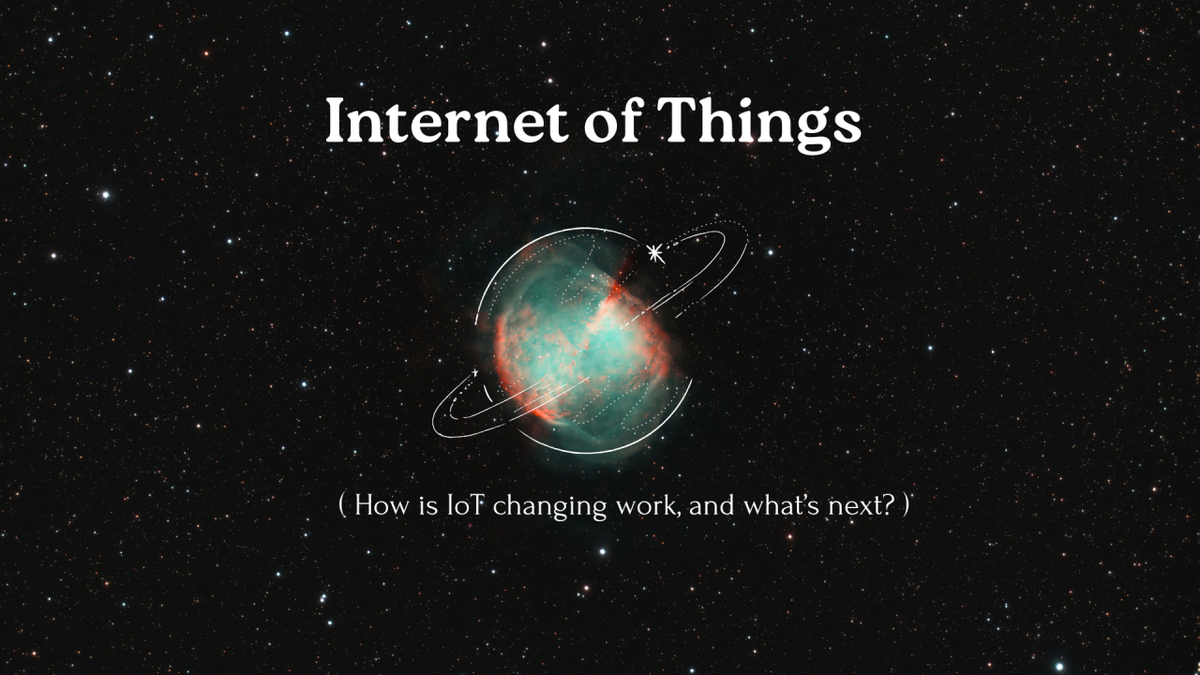Hello, Alexa! Please turn on the television, and yes, do close the windows - How IoT is changing our world and what's next?

Alexa is super friendly, and the best part? She listens and responds without a fuss—always helpful, patient, and reliable. It’s pretty awesome to have that kind of smart assistance at your fingertips! We’ve built some amazing technology in the 21st century, but have you ever wondered about the idea behind these voice-controlled assistants?
Amazon created Alexa to make life easier, more connected, and hands-free. Imagine walking into your home and simply saying, “Alexa, turn on the lights,” or asking, “Alexa, what’s the weather today?”—no buttons, no screens, just your voice.
At its core, Alexa was built to be a helpful, voice-controlled assistant that simplifies everyday tasks. Whether it’s playing your favorite music, setting reminders, controlling smart home devices, or even ordering groceries, Alexa is designed to feel like a personal assistant that’s always ready to help.
Amazon also wanted Alexa to be more than just a voice. With AI and machine learning, Alexa learns from interactions, gets smarter over time, and adapts to the way you speak. Plus, with Alexa Skills, third-party developers can add new features, making Alexa even more useful—kind of like adding apps to your phone.
By creating Alexa, Amazon wasn’t just building a product; they were shaping the future of how we interact with technology—making it feel more natural, conversational, and, in many ways, more human.
Let’s look into Tesla’s truck
Tesla’s trucks, including the Cybertruck and Semi, are more than just vehicles—they’re intelligent, connected machines powered by the Internet of Things (IoT). With real-time connectivity, these trucks receive over-the-air updates, improving performance and adding new features just like a smartphone. IoT-driven sensors, cameras, and AI-powered autopilot help enhance safety by analyzing road conditions, preventing collisions, and assisting with autonomous driving. For businesses, Tesla’s IoT system allows fleet tracking, battery monitoring, and route optimization, making operations more efficient and cost-effective. Security is also a game-changer—real-time GPS tracking and remote control features let owners lock, unlock, or even disable the truck from anywhere using the Tesla app.
Clubbing these Technologies
If all these technologies are clubbed together , they are termed as Internet of Things ;
The Internet of Things (IoT) refers to a network of physical objects, or "things," embedded with sensors, software, and connectivity, allowing them to collect and exchange data with other devices and systems over the internet.
The Future of IoT
The future of IoT promises a fully connected world where devices, AI, and automation seamlessly improve daily life. Smart homes and cities will optimize energy, traffic, and security, while AI-driven automation will enable devices to predict needs and self-repair. In healthcare, wearables will monitor vitals and detect illnesses early, while remote surgeries and personalized treatments become more common. Self-driving vehicles and smart transportation will reduce accidents and congestion, and industrial IoT will create fully automated, self-sufficient factories. As cybersecurity advances to protect billions of connected devices, IoT will become an invisible but essential part of life, making everything more efficient, intelligent, and effortless.
Dune and the Future of Silent Communication
For those who have seen Dune, they might remember that communication went speechless—pretty ironic, though. But yes, there might be a future where we create devices that allow our brains to handle communication entirely, eliminating the need for spoken words. With advancements in brain-computer interfaces (BCI) and IoT, we are already seeing early steps toward direct neural communication, where thoughts can control devices. Companies like Neuralink are exploring ways to connect human brains with technology, enabling people to interact with the digital world using only their minds. Imagine a future where smart devices, vehicles, and even other people could receive your thoughts as commands—no screens, no typing, no talking. While it sounds like science fiction, the rapid evolution of AI, IoT, and neuroscience could make it a reality sooner than we expect. A world where communication is purely thought-driven could revolutionize everything from healthcare to daily interactions, making technology feel like an extension of our minds rather than a tool we have to operate
Final Thoughts
From Alexa turning on the lights to Teslas practically driving themselves, technology is making life smoother, smarter, and maybe even a little lazier ,not that we’re complaining ! With AI and IoT evolving at lightning speed, we’re inching toward a future where devices just "get" us—no buttons, no commands, maybe not even words. Who knows? One day, you might just think about ordering pizza, and—it’s at your door. The way we interact with tech is changing fast, and honestly, it’s equal parts exciting and slightly terrifying (but mostly exciting!).
